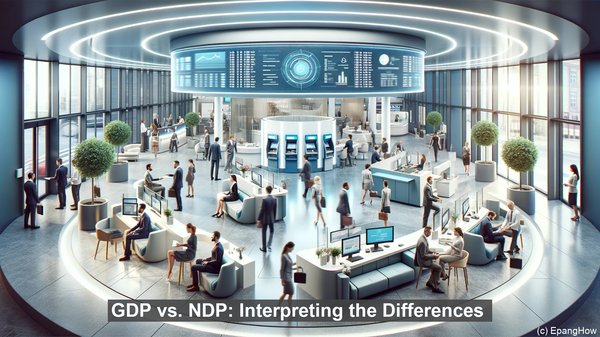Introduction: The Economic Landscape
Hello everyone, and welcome to today’s article. In the world of economics, there are numerous indicators that help us gauge a country’s economic health. Two such indicators are Gross Domestic Product (GDP) and Net Domestic Product (NDP). While they may sound similar, they have distinct differences. Today, we’ll explore these differences and understand the unique insights that each of these indicators provides.
Gross Domestic Product (GDP): The Broad Picture
Gross Domestic Product, or GDP, is a widely used measure to assess the economic performance of a country. It represents the total value of all goods and services produced within a country’s borders during a specific period, typically a year. GDP encompasses various sectors, including agriculture, manufacturing, and services. By calculating GDP, we can gauge the overall economic activity and size of an economy.

Components of GDP: Unveiling the Building Blocks
To comprehend GDP fully, it’s crucial to understand its components. GDP is typically divided into four categories: consumption, investment, government spending, and net exports. Consumption refers to the expenditure by households on goods and services. Investment includes spending on capital goods, such as machinery and infrastructure. Government spending comprises the expenses incurred by the government, while net exports represent the difference between exports and imports. By analyzing these components, we can gain insights into the various drivers of economic growth.
Net Domestic Product (NDP): Accounting for Depreciation
While GDP provides a comprehensive view of economic activity, it doesn’t account for the wear and tear of assets over time. This is where Net Domestic Product, or NDP, comes into play. NDP adjusts GDP by subtracting the depreciation of capital goods. Depreciation refers to the decrease in the value of assets due to factors like age, wear and tear, and obsolescence. By considering depreciation, NDP provides a more accurate measure of the net value of goods and services produced within a country.
GDP vs. NDP: Interpreting the Differences
The disparity between GDP and NDP can be significant. In economies with substantial capital investments, the depreciation of assets can be substantial. As a result, NDP is often lower than GDP. This discrepancy is particularly relevant when comparing the economic performance of countries with varying levels of infrastructure and capital investments. While GDP may indicate robust economic activity, NDP can provide a more nuanced understanding of the net value generated.
The Significance of GDP and NDP: Beyond Numbers
GDP and NDP aren’t just numbers; they have far-reaching implications. These indicators help policymakers formulate strategies, assess the impact of economic policies, and make informed decisions. Additionally, GDP and NDP data are crucial for businesses, investors, and analysts, providing insights into market potential, investment opportunities, and economic trends.

